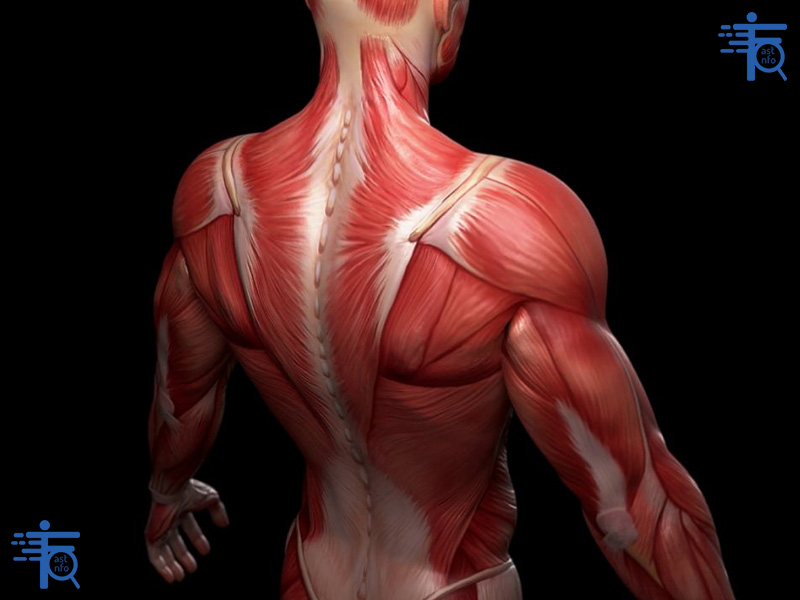14 Tips to Maximize Muscle Recovery
Maximizing muscle recovery is essential for building strength, preventing injuries, and improving performance. Whether you’re a beginner or an experienced athlete, these 14 tips will help you recover faster and get the most out of your workouts:
1. Prioritize Sleep
- Why It Matters: Sleep is when your body repairs and rebuilds muscle tissue.
- Tip: Aim for 7-9 hours of quality sleep per night. Create a sleep-friendly environment by keeping your room dark, cool, and quiet.
2. Stay Hydrated
- Why It Matters: Dehydration can impair muscle recovery and performance.
- Tip: Drink water throughout the day and consider electrolyte-rich drinks after intense workouts.
3. Eat Enough Protein
- Why It Matters: Protein provides the amino acids needed for muscle repair.
- Tip: Consume 0.7-1.0 grams of protein per pound of body weight daily. Include high-quality sources like chicken, fish, eggs, and plant-based options like beans and tofu.
4. Refuel with Carbs
- Why It Matters: Carbohydrates replenish glycogen stores, which are depleted during exercise.
- Tip: Eat carbs within 30-60 minutes post-workout (e.g., rice, potatoes, fruits, or whole grains).
5. Incorporate Healthy Fats
- Why It Matters: Fats support hormone production and reduce inflammation.
- Tip: Include sources like avocados, nuts, seeds, and olive oil in your diet.
6. Stretch and Foam Roll
- Why It Matters: Stretching and foam rolling improve flexibility, reduce muscle tension, and increase blood flow.
- Tip: Spend 10-15 minutes post-workout stretching or using a foam roller.
7. Use Active Recovery
- Why It Matters: Light activity promotes blood flow and reduces soreness.
- Tip: On rest days, try low-intensity activities like walking, swimming, or yoga.

8. Take Rest Days
- Why It Matters: Overtraining can lead to fatigue, injuries, and stalled progress.
- Tip: Schedule at least 1-2 rest days per week to allow your muscles to recover.
9. Try Massage or Massage Guns
- Why It Matters: Massage reduces muscle soreness and improves circulation.
- Tip: Use a foam roller, massage gun, or book a professional massage.
10. Apply Ice or Heat
- Why It Matters: Ice reduces inflammation, while heat relaxes muscles and improves blood flow.
- Tip: Use ice packs for acute injuries and heat packs for muscle stiffness.
11. Supplement Wisely
- Why It Matters: Certain supplements can support recovery.
- Tip: Consider:
- Protein Powder: For convenient post-workout protein.
- Creatine: Improves strength and recovery.
- BCAAs: May reduce muscle soreness.
- Omega-3s: Reduce inflammation.
12. Manage Stress
- Why It Matters: Chronic stress increases cortisol levels, which can hinder recovery.
- Tip: Practice stress-reducing techniques like meditation, deep breathing, or journaling.
13. Stay Consistent with Nutrition
- Why It Matters: Consistent nutrition ensures your body has the nutrients it needs to recover.
- Tip: Eat balanced meals throughout the day, including pre- and post-workout snacks.
14. Listen to Your Body
- Why It Matters: Pushing through pain or fatigue can lead to injuries.
- Tip: If you feel overly sore or fatigued, take an extra rest day or reduce workout intensity.

Sample Recovery Routine
Post-Workout:
- Hydrate: Drink water or an electrolyte drink.
- Refuel: Eat a meal or snack with protein and carbs (e.g., chicken and rice or a protein shake with fruit).
- Stretch: Spend 10 minutes stretching major muscle groups.
- Foam Roll: Target tight or sore areas for 5-10 minutes.
Rest Day:
- Active Recovery: Go for a light walk or do yoga.
- Massage: Use a foam roller or massage gun.
- Relax: Practice meditation or deep breathing.
Key Takeaways
- Sleep, Nutrition, and Hydration: The foundation of muscle recovery.
- Active Recovery and Rest Days: Essential for preventing overtraining.
- Listen to Your Body: Adjust your routine based on how you feel.
By following these tips, you’ll optimize your recovery, reduce soreness, and perform at your best!

How our tips are categorized
Our tips for maximizing muscle recovery are categorized into key areas that address different aspects of recovery. This organization helps you understand how each tip contributes to overall recovery and ensures you’re covering all the bases. Here’s how the tips are grouped:
1. Nutrition
- Why It Matters: Proper nutrition provides the building blocks for muscle repair and energy replenishment.
- Tips Included:
- Eat Enough Protein
- Refuel with Carbs
- Incorporate Healthy Fats
- Supplement Wisely
- Stay Consistent with Nutrition
2. Hydration
- Why It Matters: Hydration supports muscle function, nutrient transport, and overall recovery.
- Tips Included:
- Stay Hydrated
3. Sleep
- Why It Matters: Sleep is when your body repairs and rebuilds muscle tissue.
- Tips Included:
- Prioritize Sleep
4. Active Recovery and Rest
- Why It Matters: Balancing activity and rest prevents overtraining and promotes healing.
- Tips Included:
- Use Active Recovery
- Take Rest Days
- Listen to Your Body
5. Mobility and Flexibility
- Why It Matters: Stretching and mobility work improve blood flow, reduce soreness, and prevent injuries.
- Tips Included:
- Stretch and Foam Roll
6. Recovery Tools and Techniques
- Why It Matters: Tools like massage guns and heat/ice therapy can speed up recovery and reduce discomfort.
- Tips Included:
- Try Massage or Massage Guns
- Apply Ice or Heat
7. Stress Management
- Why It Matters: Chronic stress can hinder recovery by increasing cortisol levels.
- Tips Included:
- Manage Stress
8. Supplements
- Why It Matters: Supplements can fill nutritional gaps and support recovery.
- Tips Included:
- Supplement Wisely
Key Takeaways
- Holistic Approach: The tips are categorized to address all aspects of recovery, from nutrition and hydration to rest and stress management.
- Customizable: You can focus on specific categories based on your needs (e.g., improving sleep or incorporating more stretching).
- Comprehensive: By following tips from each category, you’ll optimize your recovery and performance.
This categorization ensures you have a well-rounded plan to maximize muscle recovery and achieve your fitness goals!

How long does muscle recovery take?
Muscle recovery time varies depending on factors like the intensity of your workout, your fitness level, age, nutrition, and overall health. Here’s a general guide to how long muscle recovery takes and what influences it:
General Muscle Recovery Timeline
- Light Exercise (e.g., walking, light stretching):
- Recovery Time: 24 hours or less.
- Why: Light activity causes minimal muscle damage and stress.
- Moderate Exercise (e.g., jogging, weightlifting with moderate weights):
- Recovery Time: 24-48 hours.
- Why: Moderate workouts cause some muscle fatigue and micro-tears, which require time to repair.
- Intense Exercise (e.g., heavy weightlifting, HIIT, long-distance running):
- Recovery Time: 48-72 hours.
- Why: Intense workouts cause significant muscle damage and require more time for repair and adaptation.
- Extreme Exercise (e.g., marathon running, competitive sports, high-volume training):
- Recovery Time: 72 hours or more.
- Why: Extreme exertion can lead to severe muscle damage, inflammation, and fatigue.
Factors That Influence Recovery Time
- Fitness Level:
- Beginners may need more recovery time than experienced athletes because their muscles are less conditioned.
- Age:
- Older individuals typically require longer recovery due to slower muscle repair and reduced protein synthesis.
- Nutrition:
- A diet rich in protein, carbs, and healthy fats supports faster recovery. Poor nutrition can delay healing.
- Sleep:
- Quality sleep is crucial for muscle repair. Lack of sleep can prolong recovery.
- Hydration:
- Dehydration impairs muscle function and slows recovery.
- Workout Intensity and Volume:
- Higher intensity and volume workouts cause more muscle damage and require longer recovery.
- Recovery Practices:
- Stretching, foam rolling, massage, and active recovery can speed up recovery.
- Stress Levels:
- High stress increases cortisol levels, which can hinder muscle repair.

Signs You Need More Recovery Time
- Muscle Soreness: Delayed onset muscle soreness (DOMS) lasting more than 72 hours.
- Fatigue: Feeling unusually tired or sluggish.
- Decreased Performance: Struggling to lift the same weights or maintain the same intensity.
- Joint or Muscle Pain: Persistent pain that doesn’t improve with rest.
- Poor Sleep: Difficulty sleeping or feeling unrested.
Tips to Speed Up Muscle Recovery
- Eat a Balanced Diet: Prioritize protein, carbs, and healthy fats.
- Stay Hydrated: Drink plenty of water and electrolytes.
- Get Enough Sleep: Aim for 7-9 hours of quality sleep.
- Use Active Recovery: Light activities like walking or yoga can promote blood flow.
- Stretch and Foam Roll: Reduce muscle tension and improve flexibility.
- Manage Stress: Practice relaxation techniques like meditation or deep breathing.
- Supplement Wisely: Consider protein powder, creatine, or BCAAs if needed.
Key Takeaways
- Recovery Time Varies: Light exercise may require less than 24 hours, while intense workouts can take 48-72 hours or more.
- Listen to Your Body: Pay attention to signs of fatigue or soreness to determine if you need more recovery.
- Optimize Recovery: Proper nutrition, hydration, sleep, and recovery practices can speed up the process.
By understanding your body’s needs and following these tips, you can ensure optimal muscle recovery and performance!

How do I prevent injury during muscle recovery?
Preventing injury during muscle recovery is crucial for maintaining progress and staying consistent with your fitness goals. Here are 10 tips to help you recover safely and avoid injuries:
1. Listen to Your Body
- Why It Matters: Pushing through pain or fatigue can lead to injuries.
- Tip: If you feel overly sore, fatigued, or notice sharp pain, take a break or reduce workout intensity.
2. Prioritize Proper Warm-Ups and Cool-Downs
- Why It Matters: Warming up prepares your muscles for activity, while cooling down helps prevent stiffness.
- Tip: Spend 5-10 minutes warming up (e.g., dynamic stretches, light cardio) and cooling down (e.g., static stretching, foam rolling).
3. Avoid Overtraining
- Why It Matters: Overtraining increases the risk of injuries and delays recovery.
- Tip: Schedule rest days and avoid working the same muscle groups on consecutive days.
4. Focus on Proper Form
- Why It Matters: Poor form can strain muscles and joints, leading to injuries.
- Tip: Learn proper technique for each exercise and consider working with a trainer if needed.
5. Gradually Increase Intensity
- Why It Matters: Sudden increases in workout intensity can overwhelm your muscles and lead to injuries.
- Tip: Follow the 10% rule—increase weight, reps, or intensity by no more than 10% per week.
6. Incorporate Active Recovery
- Why It Matters: Light activity promotes blood flow and reduces soreness without overloading your muscles.
- Tip: On rest days, try low-intensity activities like walking, swimming, or yoga.
7. Stretch and Foam Roll Regularly
- Why It Matters: Stretching and foam rolling improve flexibility, reduce muscle tension, and prevent imbalances.
- Tip: Spend 10-15 minutes post-workout stretching or using a foam roller.
8. Stay Hydrated
- Why It Matters: Dehydration can impair muscle function and increase the risk of cramps and injuries.
- Tip: Drink water throughout the day and consider electrolyte-rich drinks after intense workouts.
9. Eat a Balanced Diet
- Why It Matters: Proper nutrition supports muscle repair and reduces inflammation.
- Tip: Focus on protein, carbs, healthy fats, and anti-inflammatory foods (e.g., fruits, vegetables, omega-3s).
10. Get Enough Sleep
- Why It Matters: Sleep is when your body repairs and rebuilds muscle tissue.
- Tip: Aim for 7-9 hours of quality sleep per night. Create a sleep-friendly environment by keeping your room dark, cool, and quiet.
11. Use Recovery Tools
- Why It Matters: Tools like massage guns, ice packs, and heat pads can reduce soreness and prevent injuries.
- Tip: Use a massage gun or foam roller to target tight muscles, and apply ice or heat as needed.
12. Avoid Overstretching
- Why It Matters: Overstretching can strain muscles and ligaments.
- Tip: Stretch to the point of tension, not pain, and avoid bouncing during stretches.
13. Strengthen Supporting Muscles
- Why It Matters: Weak supporting muscles can lead to imbalances and injuries.
- Tip: Incorporate exercises that target stabilizer muscles (e.g., planks, single-leg squats).
14. Monitor Pain and Soreness
- Why It Matters: Distinguishing between normal soreness and pain from an injury is key to preventing further damage.
- Tip: Normal soreness (DOMS) typically peaks within 24-48 hours and improves with movement. Pain that worsens or persists may indicate an injury.

Sample Recovery Routine to Prevent Injury
Post-Workout:
- Cool Down: 5-10 minutes of light cardio and stretching.
- Hydrate: Drink water or an electrolyte drink.
- Refuel: Eat a meal or snack with protein and carbs.
- Foam Roll: Spend 5-10 minutes targeting tight or sore areas.
Rest Day:
- Active Recovery: Go for a light walk or do yoga.
- Stretch: Focus on major muscle groups.
- Massage: Use a foam roller or massage gun.
- Relax: Practice meditation or deep breathing.
Key Takeaways
- Listen to Your Body: Avoid pushing through pain or fatigue.
- Warm Up and Cool Down: Prepare your muscles for activity and prevent stiffness.
- Gradual Progression: Increase intensity slowly to avoid overloading your muscles.
- Recovery Practices: Stretching, foam rolling, and active recovery can prevent injuries.
By following these tips, you’ll recover safely, reduce the risk of injuries, and stay on track with your fitness goals!
fastinfosearch site provides the best information
Suggested content:





No comment